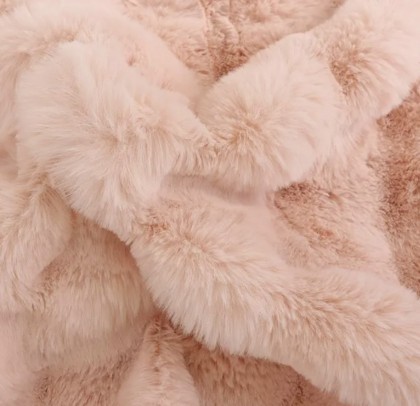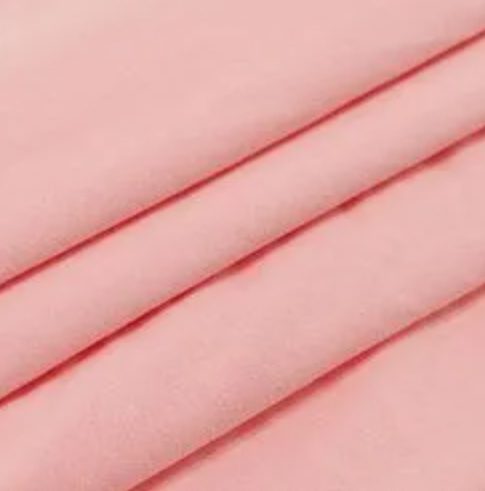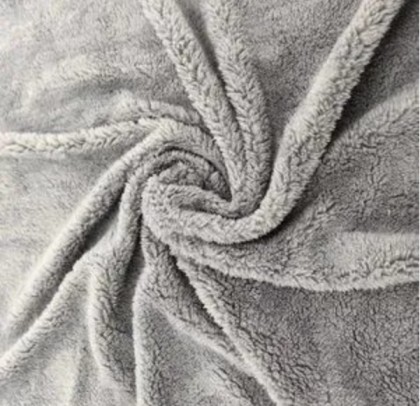If you’re wondering what polar fleece fabric is made of, it is primarily crafted from polyester, which is often sourced from PET plastic. Understanding what polar fleece fabric is made of helps explain why this synthetic material offers unique benefits compared to natural fabrics.
- Because of what polar fleece fabric is made of, you stay warm and cozy without feeling heavy.
- The fabric’s composition means it doesn’t absorb water and dries quickly, keeping you comfortable.
- Thanks to the composition of polar fleece fabric, it remains soft, retains its shape, and withstands repeated washing.
- Unlike wool, polar fleece doesn’t develop mildew, and unlike cotton, it doesn’t soak up water.
Knowing what polar fleece fabric is made of shows why it’s such a popular choice for outdoor and active wear.
What Is Polar Fleece Fabric Made Of
Polyester and PET
If you ask what polar fleece fabric is made of, the answer is polyester. Polyester comes from two chemicals found in petroleum. These are terephthalic acid and ethylene glycol. Factories mix these chemicals using high heat. This makes a plastic called PET. PET is also used in water bottles and food containers. The PET is melted and pulled into thin fibers. These fibers are used to make polar fleece fabric, including the cheap polar fleece fabric often found in markets and online stores.
Polar fleece fabric for sale feels soft and strong because of PET fibers. The fabric is light but keeps you warm. It does not shrink or stretch easily. You can wash it many times, and it stays the same shape. When you think about what polar fleece fabric is made of, remember that polyester and PET are the most important.
Recycled Materials
Many companies now use recycled things to make polar fleece. If you wonder what polar fleece fabric is made of today, recycled PET is often used. Old plastic bottles are collected and cleaned. They are crushed into small pieces called chips. The chips are melted and turned into new polyester fibers. This helps us use less new plastic and keeps trash out of landfills.
Using recycled PET in polar fleece has many good points:
- It saves energy. Making recycled polyester uses much less energy than making new polyester.
- It lowers pollution.
- It keeps plastic bottles out of landfills and oceans.
But recycled polar fleece still has some problems. When you wash it, tiny fibers called microplastics can break off. These can get into the water and hurt fish and other animals. Dyeing fleece also uses lots of water and chemicals. This can pollute rivers and lakes.
In the last ten years, more fleece has been made with recycled stuff. Brands like Polartec and Patagonia started using recycled polyester in the 1990s. Now, many fleece clothes have at least half recycled content. Most outdoor brands now use recycled materials in their fleece.
Blends with Natural Fibers
Sometimes, polar fleece is mixed with natural fibers like cotton or wool. If you check what polar fleece fabric is made of in these cases, you will see both polyester and natural fibers. These blends change how the fabric feels and works.
Here is a table that shows how different blends change the fabric:
| Blend Type | Performance Characteristics |
|---|---|
| Cotton Fleece | Soft, lets air through, smooth outside, fluffy inside; good for layers; not as warm; good for sensitive skin. |
| Poly-Cotton Fleece | Warmer than just cotton fleece; costs less; balances warmth and breathability. |
| Cotton-Polyester-Spandex | Stretches for sports; warm, lets air through, and bends easily |
| Polyester-Wool Blend | Changes how it feels and looks; makes it warmer and stronger |
Cotton blends feel soft and let your skin breathe. Poly-cotton blends are warmer and cost less than pure cotton. Spandex makes the fabric stretchy, which is good for sports. Wool blends make fleece warmer and tougher. Still, polyester is the main part of most polar fleece fabrics.
Tip: If you want fleece that is extra soft or stretchy, pick blends with cotton or spandex. For the warmest fleece, choose polyester or polyester-wool blends.
Manufacturing

Knitting Process
You start making polar fleece with polyester pellets. Factories melt these pellets and push the liquid through tiny holes to form fine threads. These threads become yarns. The thickness of the yarn changes how heavy or light your fleece will feel.
Next, machines knit these yarns into fabric. Polar fleece uses special knitting machines that create a double-sided knit. This means you get a plush surface on both sides of the fabric. The double-sided knit makes the fabric soft and strong. You can stretch it, and it bounces back to shape. This step also lets you control how thick or thin the fleece will be.
Here’s a simple look at the main steps:
- Melt polyester pellets and form threads.
- Spin threads into yarns.
- Knit yarns into fabric using double-sided machines.
- Adjust stitch density for softness and strength.
Tip: Double-sided knitting is what gives polar fleece its famous fluffy feel on both sides. Other synthetic fabrics often skip this step, so they feel different.
Napping and Texture
After knitting, you need to make the fabric soft and warm. This is where napping comes in. Napping means brushing the fabric with special machines. The brushes lift the tiny fibers on the surface, making the fabric fuzzy and thick. This fuzzy layer traps air, which keeps you warm.
The napping process does more than just make fleece soft. It also creates many tiny air pockets. These pockets act like insulation, holding in your body heat. The more the fabric is brushed, the warmer and softer it feels. Factories may also shear the raised fibers to make the surface even and smooth.
- Brushing both sides increases softness and warmth.
- Shearing trims the fibers for a neat look.
- Some fleece gets extra treatments, like anti-pilling or water resistance.
The napping process is key to polar fleece’s warmth and comfort. It turns a simple knit fabric into something cozy and insulating.
Modern factories now use recycled polyester and advanced machines to make fleece even better. Brands like Polartec and Patagonia use recycled bottles to create new fleece, helping the environment. Some companies add water-repellent coatings or use smart technology to make fleece that keeps you dry and warm in any weather.
Properties
Warmth and Insulation
Polar fleece keeps you warm because of its special structure and synthetic fibers. The double-sided knit traps air between the layers. This trapped air acts as insulation, holding in your body heat. You feel cozy even when the weather turns cold. The polyester fibers do not absorb water, so the fabric stays warm even if it gets wet.
Scientists use several tests to measure how well polar fleece insulates:
- Measure the temperature at the top and bottom of the fabric.
- Check how much heat energy is needed to keep the temperatures steady.
- Calculate the thermal resistance by dividing the temperature difference by the heat flow.
- Use special tools to see how well the fabric keeps warmth when it is wet.
You can also look at the table below to see how labs check fleece for warmth:
| Measurement Type | Description |
|---|---|
| Fiber Diameter Measurement | Looks at fiber size, which affects warmth and strength. |
| Thermal Resistance (R-value) | Measures how well the fabric stops heat from escaping. |
| Clo Units | Shows how much insulation the fabric gives; 1 clo keeps you comfy at 70°F. |
Breathability and Quick-Drying
You stay comfortable in polar fleece because it lets air move through the fabric. The knit structure and polyester fibers help sweat move away from your skin. This moisture-wicking action keeps you dry during activities like hiking or running. Polar fleece dries up to four times faster than cotton. Even when wet, it keeps up to 85% of your body heat.
Here’s how polar fleece compares to other fabrics:
| Fabric Type | Breathability & Moisture Management | Drying Speed | Insulation & Warmth |
|---|---|---|---|
| Polar Fleece | Good air flow, excellent moisture-wicking | Dries much faster than cotton | Keeps most warmth even when wet |
| Cotton | Breathable, poor moisture-wicking | Dries slowly | Loses warmth when wet |
| Polyester | Less insulating than fleece | N/A | Not as warm as polar fleece |
Tip: Choose polar fleece for outdoor sports or cold weather. You will stay dry and warm, even if you sweat or get caught in the rain.
Durability and Pilling
Polar fleece stands up to lots of use and washing. The strong polyester fibers help the fabric keep its shape and softness. You may notice some small balls, called pills, after the first few washes. Most of these pills form early and then stop appearing as you keep washing the fabric. Scientists found that the number of tiny fibers released drops a lot after the first five washes. After that, the fabric sheds much less.
To keep your fleece looking good:
- Turn garments inside out before washing.
- Wash with soft fabrics, not rough ones like denim.
- Avoid bleach and fabric softeners.
- Air dry or use low heat in the dryer.
Following these steps helps your fleece last longer and reduces pilling, so you can enjoy its warmth and softness for years.
Comparison to Other Fleeces
Synthetic vs. Natural
When you look at polar fleece and wool fleece, you see they are different. Polar fleece is made from synthetic polyester fibers. Wool fleece comes from animal hair, like sheep or alpacas. Both fabrics keep you warm by trapping air, but they do it in their ways.
Here is a table that shows the main differences:
| Aspect | Polar Fleece | Natural Wool Fleece |
|---|---|---|
| Origin | Synthetic polyester fibers | Animal hair from sheep, alpacas, and goats |
| Fiber Structure | Synthetic fibers trap air pockets | Crimped natural fibers trap body heat |
| Insulation Mechanism | Warmth from air pockets in fabric | Warmth from fiber crimp and air pockets |
| Moisture Handling | Dries quickly, less breathable, loses warmth when wet | Absorbs moisture, stays warm even when wet |
| Environmental Impact | Machine washable, hypoallergenic, but can cause microplastic pollution | Biodegradable, renewable, but uses more resources and raises animal welfare concerns |
Polar fleece dries fast and feels light. Wool fleece keeps you warm even if it gets wet, but it dries slowly. Wool is heavier and needs special care. Polar fleece is good for sports and is easy to wash. Wool fleece is better for very cold or wet weather.
Tip: Wool fleece is great for staying warm in wet weather. Polar fleece is best if you want something that dries fast and is easy to wash.
Polar Fleece vs. Microfleece
You may wonder how polar fleece and microfleece are different. Both are made from polyester, but they feel and work differently. Polar fleece is thicker and gives more warmth. Microfleece is lighter and thinner, so it is good for layering or sports.
Look at this table for a quick comparison:
| Performance Aspect | Polar Fleece | Microfleece |
|---|---|---|
| Weight | Lightweight but thicker | Lighter and thinner |
| Warmth | Good insulation, best for jackets and cold weather | Moderate warmth, good for layering |
| Moisture Management | Wicks moisture, dries quickly | More breathable, dries even faster |
Pick polar fleece if you need to stay warm outside in cold weather. Microfleece is better if you want something light, breathable, and quick to dry for sports or as a base layer.
Microfleece helps you stay cool and dry when you exercise. Polar fleece keeps you warm when it is cold. Choose the one that fits your activity and comfort best.
Uses and Care

Common Uses
You see polar fleece everywhere because it works well in many situations. Outdoor clothing brands use it to make jackets, vests, hats, gloves, and scarves. You can wear these items for hiking, skiing, or just staying warm in cold weather. Polar fleece keeps you cozy without feeling heavy.
At home, you find polar fleece in blankets, throws, and pillow covers. These items add warmth and softness to your living space. Many people choose fleece bedding and cushion covers for extra comfort during chilly nights.
Here is a table that shows where you might use polar fleece:
| Industry | Applications |
|---|---|
| Apparel | Jackets, vests, gloves, scarves, loungewear, pajamas |
| Outdoor Gear | Base layers, tactical clothing, camping blankets |
| Home Décor | Throws, cushion covers, fleece sheets |
Tip: Choose polar fleece for outdoor adventures or to make your home feel extra cozy. Its lightweight warmth makes it a favorite for both active and relaxing moments.
Care Tips
You want your polar fleece to stay soft and last a long time. Start by checking the care label before washing. Always turn fleece inside out to protect the fibers. Wash it with other soft fabrics, not rough items like jeans or towels. Use cold or lukewarm water and pick the gentle cycle on your washing machine.
Use a mild liquid detergent. Avoid bleach and fabric softeners because they can damage the fabric. If you need to dry your fleece, air drying works best. Lay it flat or hang it in a cool, shaded place. If you use a dryer, choose the lowest heat setting and add dryer balls to keep the fleece fluffy.
Never iron fleece directly. If you must remove wrinkles, use a protective cloth or hang the item in a steamy bathroom. Store fleece in a cool, dry place away from sunlight to prevent fading.
Washing fleece too often or with harsh products can cause pilling and make the fabric rough. High heat can shrink or damage the fibers. Gentle care helps your fleece stay soft, warm, and looking new.
You may notice some pilling or shedding of tiny fibers, especially after the first few washes. This is normal, but washing with care reduces the problem. Remember, fleece can shed microfibers that may harm the environment, so wash only when needed and use a washing bag if possible.
You now know what polar fleece fabric is made of—mostly polyester, often from recycled plastic bottles, with some blends for special features. This unique mix gives you a fabric that is soft, warm, lightweight, and quick to dry.
- Polar fleece works well for outdoor gear, home textiles, and sportswear.
- It resists moisture, keeps its shape, and feels gentle on your skin.
Understanding what is polar fleece fabric made of helps you choose products that fit your needs and support eco-friendly options.




